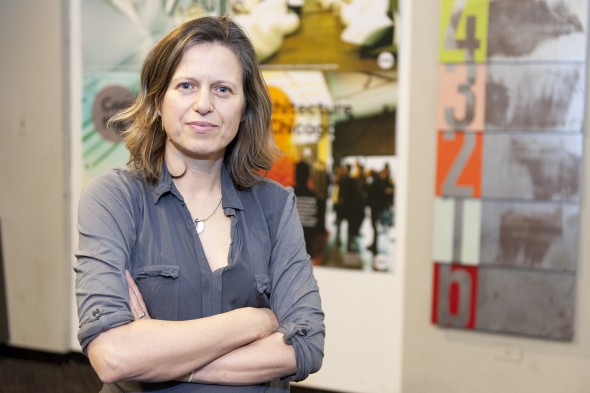Scholar of the Year Clare Lyster
Clare Lyster
Distinguished Scholar, Arts and Humanities
Associate professor of architecture
Years at UIC: 18
What are your research interests?
Architecture, urbanism, urban networks, infrastructure, landscape
How did you become interested in these topics?
I was always curious about sites and places even before I became interested in buildings. While I had a pretty traditional training in architecture as an undergraduate, it was at graduate school where I was introduced to other ways to think about the built environment through new forms of urban discourse, including network thinking and landscape systems.
What do you teach?
I teach design studios and theory seminars in both the undergraduate and graduate programs at the School of Architecture.
How do you balance teaching and research?
I’m very lucky that the studios and seminars I teach at the School of Architecture often intersect with my own work at any given time, so there is a lot of overlap between teaching and research. I’m fortunate that one realm can provide feedback to the other.
But the balance is always difficult especially as a junior faculty, when there is a lot going on in your life and you just have to keep the research wheels turning. I learned to accept that sometimes one’s production rate slows down — the main thing is to keep plugging away no matter what the pace. Continuity is important as is taking the long view. I’ve become more tortoise and less hare — slow and steady wins the race.
What’s your advice to students who want to focus their future careers on research?
In architecture, research is somewhat of a foggy term. No one seems to fully understand what it means. Yet, everything we do in the discipline is research of one form or another, whether it is material or tectonic research or research of new construction systems. In my case, research is exploring the spatial implications of socio-cultural phenomena that might not be inherently architectural to begin with. Often this involves mining research of phenomena outside the discipline and then speculating on the architectural and urban consequences through design. This type of design-based research is a great way to test architecture’s capacity to problematize transformational events in society and to think about them critically. In this way, research is projective, rather than research for the sake of research. This way of thinking is now being deployed in the profession, where the complexities of large-scale projects can be played out and is even being adopted by other fields — suddenly design thinking is a popular term in a range of disciplines, not just architecture. Universities are dedicating new courses and departments around this. So, in summary, I think a research-based practice in architecture opens up a lot of avenues for our students not only as an academic pursuit but also for those who want to pursue a design career as a broader cultural practice.

